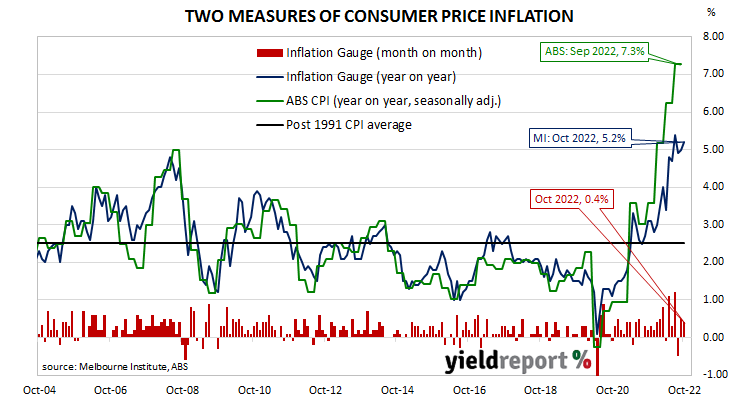Summary: Melbourne Institute Inflation Gauge index up 0.4% in October; up 5.2% on annual basis.
The Melbourne Institute’s Inflation Gauge is an attempt to replicate the ABS consumer price index (CPI) on a monthly basis. It has turned out to be a reliable leading indicator of the CPI, although there are periods in which the Inflation Gauge and the CPI have diverged for as long as twelve months. On average, the Inflation Gauge’s annual rate tends to overestimate the ABS rate by around 0.1%.
The Melbourne Institute’s latest reading of its Inflation Gauge index indicates consumer prices increased by 0.4% in October. The rise follows a 0.5% increase in September and a 0.5% fall in August. On an annual basis, the index rose by 5.2%, up from 5.0% in September.
Commonwealth Government bond yields moved modestly higher on the day. By the close of business, the 3-year ACGB yield had crept up 1bps to 3.34% while 10-year and 20-year yields both finished 2bps higher at 3.77% and 4.10% respectively.
In the cash futures market, expectations regarding future rate rises firmed a touch on average. At the end of the day, contracts implied the cash rate would rise from the current rate of 2.31% to average 2.845% in November and then increase to an average of 3.05% in November. May 2023 contracts implied a 3.82% average cash rate while August 2023 contracts implied 3.945%.
Central bankers desire a certain level of inflation which is “sufficiently low that it does not materially distort economic decisions in the community” but high enough so it does not constrain “a central bank’s ability to combat recessions.” Hence the recent obsession among central banks, including the RBA, to bring inflation back to their various targets.


